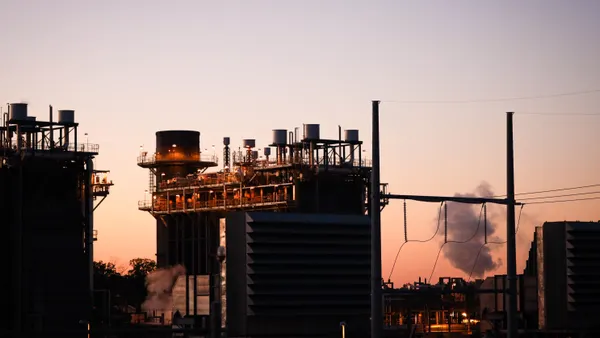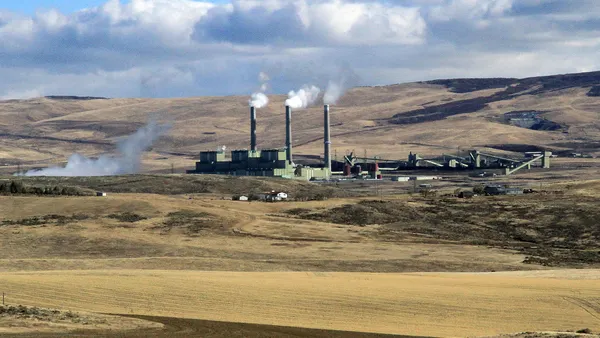Dive Brief:
- Gas-fired power's share of the United States energy mix is expected to edge out coal's on an annual basis, according to the U.S. Energy Information Administration's prediction for 2016, following decades of coal's dominance.
- While coal and gas wound up generating roughly equal amounts of energy last year, EIA says gas is expected to capture 33% of the market in 2016 while coal falls to 32%.
- Coal's share of the generation mix peaked in the 1980s, when it almost reached 60% of the power supplied. Gas is poised to generate about a third of the country's mix, compared with roughly 10% in the late 80s.
- EIA said the gap between coal and gas began to close beginning in 2009, as hydraulic fracturing and shale gas changed the balance between supply and demand in U.S. markets.
Dive Insight:
Before April of last year, natural gas had never topped coal power. But 2015 closed out with a string of months where gas took the top slot, though the year ended with coal still generating slightly more energy. All-in-all, gas actually exceeded coal's share in seven months last year, and EIA now indicates that trend is likely to grow.
"The recent decline in the generation share of coal, and the concurrent rise in the share of natural gas, was mainly a market-driven response to lower natural gas prices," EIA said. Stricter environmental rules, including the Mercury and Air Toxics Standard and the planned Clean Power Plan, have also played a role.
And on the environmental issue, EIA predicts things will get tougher for coal plant owners. They will "face decisions to either retire units or reduce their utilization rate," the agency said. The Clean Power Plan, delayed by the U.S. Supreme Court, was expected to go into effect in 2022.
But even if the rule is ultimately upheld, the Supreme Court's stay on implementation of the rule could significantly impact compliance timelines for states and utilities. As it stands, the EPA will be unable to enforce its September deadline for states to submit compliance plans or request an extension.
Prices and regulations are not the only factors impacting coal's market share, however, with cleaner energy driving the U.S. energy mix.
"Unlike the growth of natural gas-fired generation, which has largely been market-driven, increased use of nonhydro renewables has largely been driven by a combination of state and federal policies," EIA said. "The use of renewable energy sources such as wind and solar has also grown rapidly in recent years so that generation from these types of renewables is now surpassing generation from hydropower."
EIA forecast gas' share of power generation will hit 33%, while coal's share falls to 32%. Non-hydro renewables supply 8% of power this year, the agency predicts, with hydropower's share at 6%.













